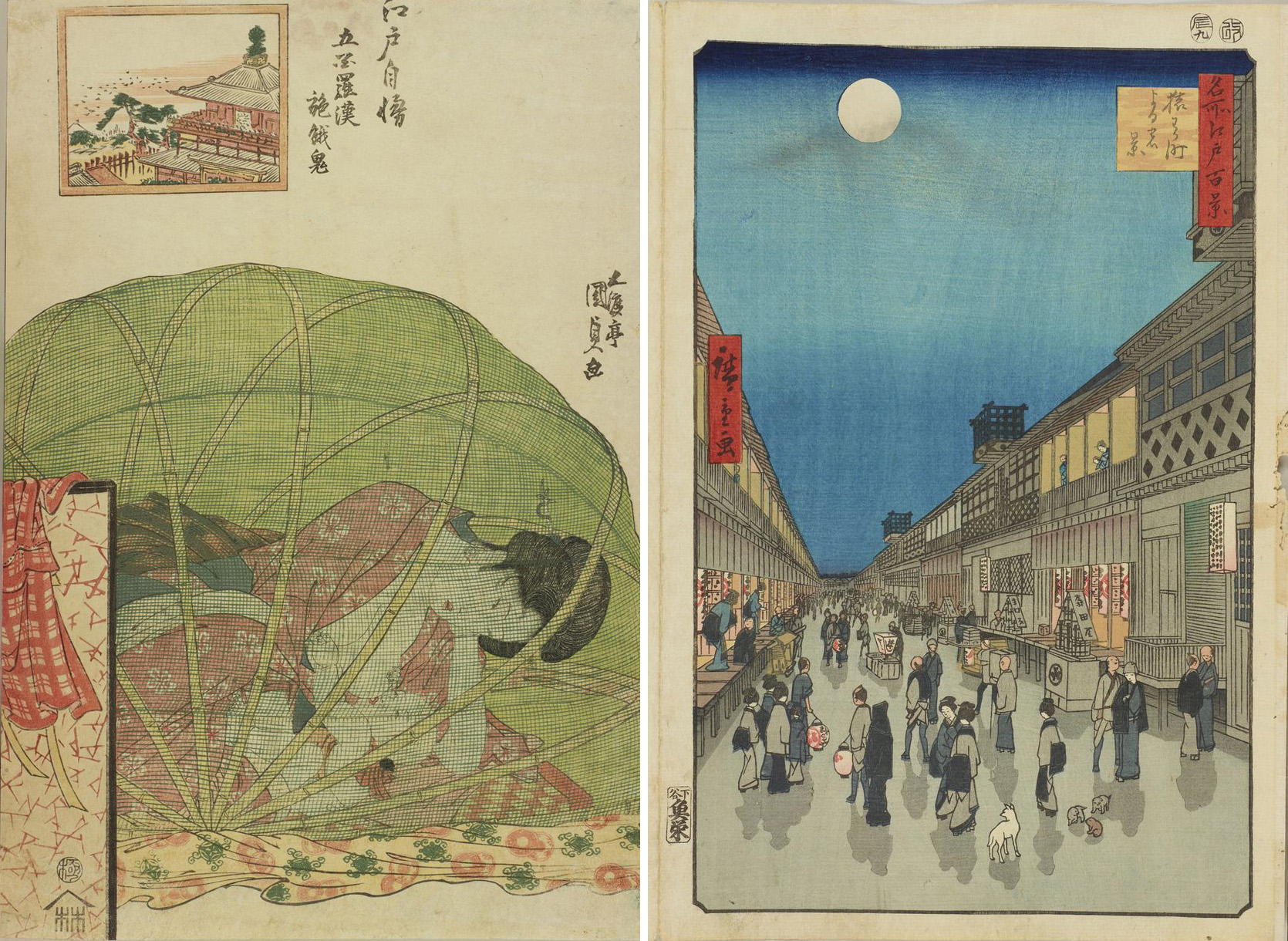Everyday life in Edo (present-day Tokyo) was befitting of a capital city — an era of beautiful women, graceful kabuki actors, bustling streets and breathtaking sights. The peace and stability imposed by the Edo Period (1603-1868) Tokugawa Shogunate allowed the city to flourish and led to the growth of a leisure class of consumers intent on enjoying its marvels. During this time, ukiyo-e woodblock prints also became popular, as they captured cultural triumphs and depicted the people and townscape of Japan's capital city.
"Excellent Techniques of Carving and Printing: 250th Birth Anniversary of Multi-Colored Print," at the Ukiyo-e Ota Memorial Museum of Art, showcases the techniques employed by artists, carvers and printers to create ukiyo-e prints, while highlighting contributions by the often anonymous artisans who were essential to the print-making process. It wasn't until the 1850s, nearly a century after the birth of the polychrome print, that it became common practice for the most skilled carvers to be credited on prints, with their names alongside those of the artists.
Making a multicolored print was an intensive process that began with the artist using a brush to create an outline on paper. Next, the carver engraved the design into a wood block. Separate blocks were created for various colors. Lastly, the printer applied pigment to the blocks, pressing or burnishing a piece of paper onto each block in succession to transfer the colors.



















With your current subscription plan you can comment on stories. However, before writing your first comment, please create a display name in the Profile section of your subscriber account page.